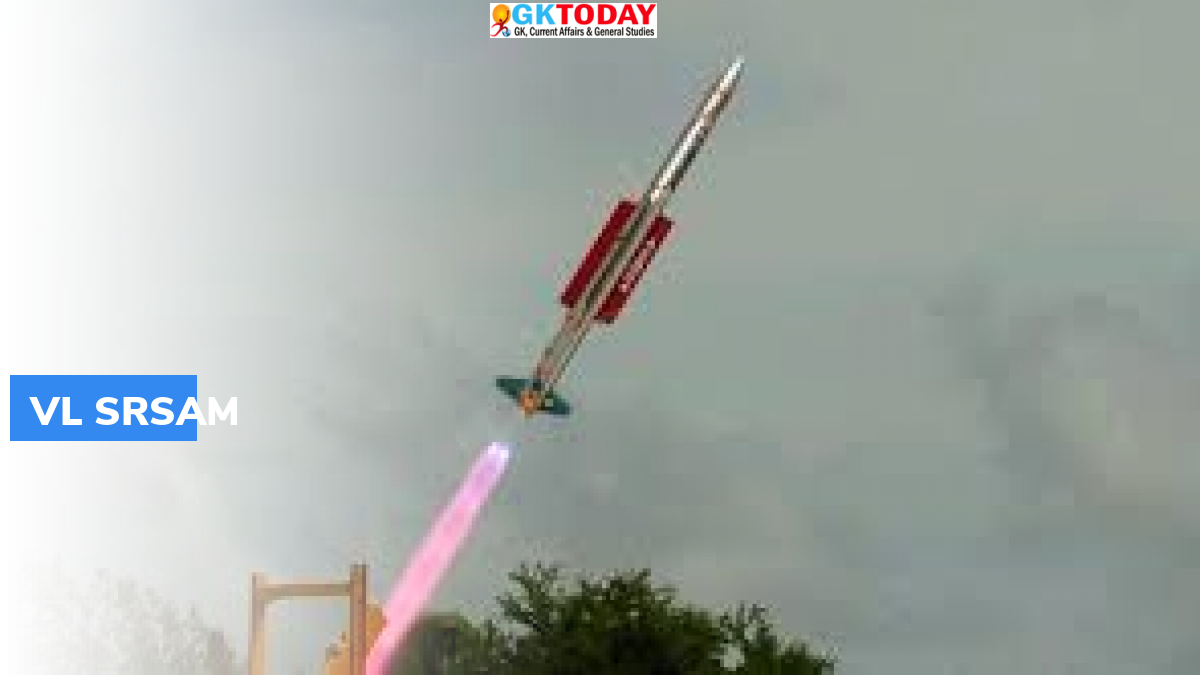Vertical Launch Short Range surface-to-air missile (VL-SRSAM) test fired
Recently, Defence Research & Development Organisation and Indian Navy successfully flight tested Vertical Launch Short Range Surface-to-Air Missile (VL-SRSAM) from the Integrated Test Range Chandipur, Odisha.
Key Points
- The flight test was conducted against a high speed unmanned aerial target to demonstrate vertical launch capability from an Indian Navy ship.
- During the test launch, the flight path and vehicle performance parameters were monitored by senior scientists from various DRDO laboratories using flight data, captured by various Range instruments such as Electro-optical tracking system (EOTS), Radar and Telemetry systems deployed by ITR, Chandipur.
- This successful test has proved the effectiveness of the weapon system and the missile will further strengthen the Indian Navy to neutralize various airborne threats at close range including sea-skimming targets.
Vertical Launch Short Range Surface to Air Missile (VL-SRSAM)
- VL-SRSAM was indigenously developed and designed by DRDO.
- Missiles have been launched for the Indian Navy.
- They will neutralize the various aerial threats including the sea-skimming targets.
- DRDO has performed two trials in order to demonstrate the vertical launch capability.
- Both the missiles intercepted the simulated targets with pinpoint accuracy.
- These missiles were also tested for its minimum range and the maximum range.
- VL-SRSAM with the Weapon Control System were also deployed during the trials.
- During the missile testing, vehicle performance and flight path parameters were also monitored. These parameters were monitored through the flight data that was captured using the range instruments.
Features of the missile
The missiles feature the mid-course inertial guidance along with the terminal active radar homing. It will replace the older Barak-1 surface to air missile system. It will be used as short-range air defence system in the Indian navy and Indian Air Force. Missiles have been developed from 2006 pre-design of Astra Mark 1 comprising of four short-span long-chord wings. But it also comprises additional jet vane driven thrust vector control that enables the quick reaction vertical launch. The missile has a 360° interception capability.
Month: Current Affairs - August, 2022
Category: Defence Current Affairs


